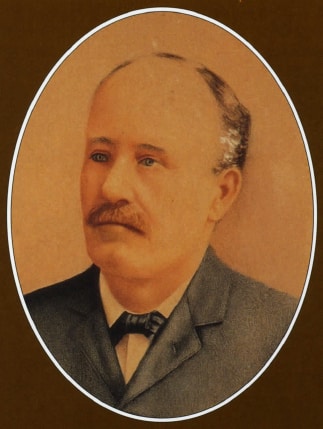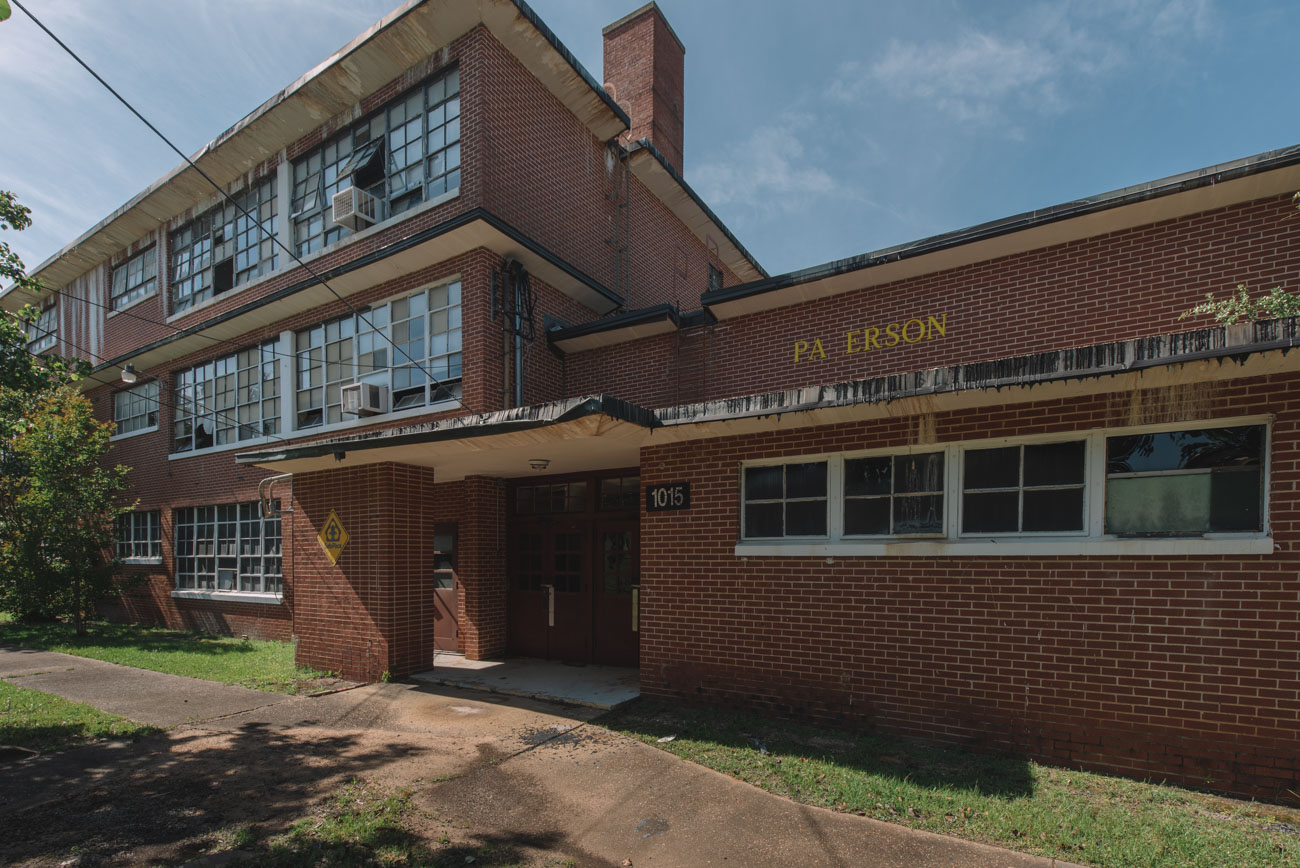| City/Town: • Montgomery |
| Location Class: • Educational |
| Built: • 1953 | Abandoned: • 2009 |
| Historic Designation: • African American Heritage Site |
| Status: • Abandoned |
| Photojournalist: • David Bulit |

William Burns Paterson is known for being an educational provider and one of the founders of Alabama State University. Born on February 9, 1850, in Scotland, he made his way to America in 1867 and drifted his way down south, eventually opening a school for African Americans in early 1870. He moved the school to a log cabin located four miles outside of Greensboro before settling in a small frame structure he constructed himself in Greensboro in 1871. Paterson named the school, Tullibody Academy, after his home village back in Scotland and remained at the school until 1878 when he moved to Marion. Tullibody Academy operated until 1886 with the help and financial aid of many affluent members of the community, despite opposition from many whites in Greensboro who were indifferent or hostile towards Negro education.
In 1879, Paterson became president of the Lincoln Normal University for Colored Students where he remained for many years. In 1887, Paterson began working on securing an appropriation as well as a legislative authorization to relocate the school after a fire destroyed many of the campus buildings. In 1889, the school was relocated to Montgomery where he reopened it in the Beulah Baptist church as the State Normal School for Colored Students. Paterson presided over the institution he died of heart failure on March 16, 1915. The name of the institution would change throughout the following years until 1969, when the State Board of Education, then the governing body of the university, had the name changed to Alabama State University.
Bearing his name, W. B. Paterson Elementary School was first constructed in 1953 at a cost of precisely $227,527.63, consisting of twelve classrooms, a multi-purpose room with a stage and kitchen, offices, a medical clinic, and a teacher’s lounge. The building was expanded throughout the years with daily attendance peaking in the early-1960s with over 760 students, some of which were children of military and civilian personnel stationed at the nearby Maxwell Air Force Base, Gunter Air Force Base, and Veteran’s Administration Hospital.
Paterson Elementary, like many schools in Alabama at the time, was segregated and exclusively African American children were in attendance. After the United States Supreme Court’s 1954 ruling in Brown v. Board of Education struck down racial segregation in public schools, the Alabama legislature followed up by passing a constitutional amendment in 1956 that eliminated the state’s responsibility to guarantee public education. This amendment was designed to avoid desegregation and provide support for segregated private schools, which soon began appearing all throughout the state. This amendment also allowed any school to suddenly close down when faced with integration. It wasn’t until the late-1960s, with the passing of the Civil Rights Act in 1964 and then in 1967, the invalidation of a 1955 “pupil placement law” by U.S. District Judge Frank M. Johnson Jr., did integration truly begin in Alabama’s school system.
Paterson Elementary School closed down in 2009 following a vote by the Montgomery County Board of Education. Two other schools in the county, Hayneville Road Elementary School and Pintlala Elementary School, were closed along with it in an effort to save $3 million for a school system facing a $13 million revenue shortfall. At the time of its closing, Paterson Elementary served 153 students from K-5th grade with a student-to-teacher ratio of 10:1, one of the lowest in the state. The school reopened for a short time as Paterson Academy Creative Education, a magnet school serving grades 6-12, but that too was shuttered.

























